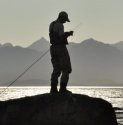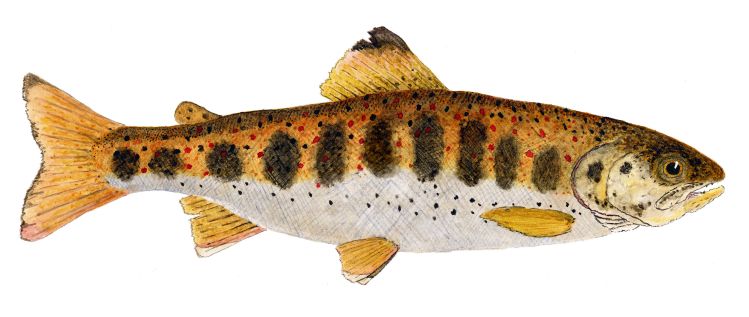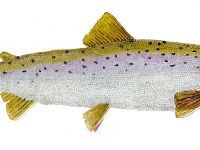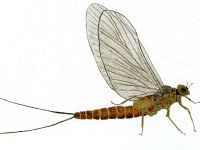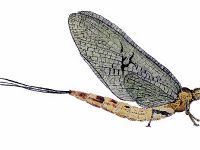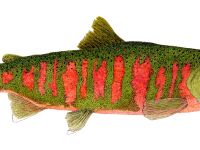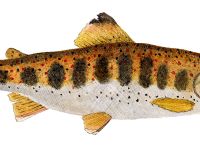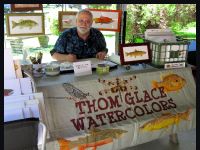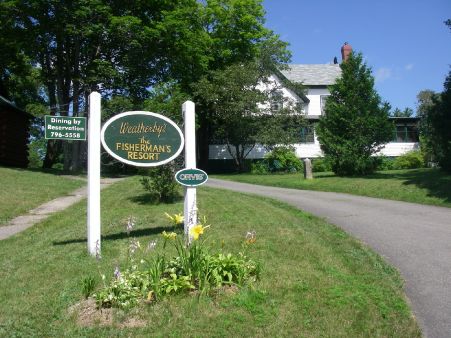Fd: How did you get into fly fishing?
Thom: I was raised to love the water, particularly the ocean. My father had me in SCUBA gear by the time I was 13. I became PADI certified in 1972. With this background, my wife bought me a fly fishing course through Orvis around 16 years ago. It was love at first cast- I am proud to say I was the only student to actually catch a trout, two in fact.
Fd: Where did your love of making watercolors of fish and dragonflies come from?
Thom: 11 years ago I had a catastrophic heart attack and had to retire on disability. When I finally was able to get out of bed I looked for what I called -a non destructive hobby. I tried watercolors- starting with miniature landscapes.
A gallery owner happened to see a couple of my pieces and asked me to show in their gallery. I expanded from their and my second gallery was in Boiling Springs- and my love of trout made me try a painting. I found my niche and took off with my 'biological studies of fish in watercolors'. I now have over 100 species of fish completed.
I was looking for a subject that was more for the female audience than fish and was intrigued by insects. I tried a butterfly and a dragonfly and gave it to a gallery to sell. The owner stated that she found dragonflies sold a ton better than butterflies- so I painted dragonflies. I now love them and became in contact with some entomology professors at Texas A&M and used their photographs, research and input to become as realistic as possible. I now am expanding into mayflies, stoneflies and caddisflies- due to my trout fishing audience and love of the insect structure to paint. I spend as much time researching a subject as I do painting it.
Fd: What can you tell other anglers about the work of Project Healing Waters and Casting for Recovery?
Thom: Both are very volunteer driven- one that help the soldiers with both physical and mental issues. They get them out on the water to fly fish and -just find enjoyment back in their life- something they deserve. Since I am disabled and walk with a cane I was able to appreciate what this organization does for these deserving individuals. In fact -due to my personal issues I only fly fish with Tenkara- where I don't have to use a reel. Just one hand is needed.
Casting for Recovery is to support women recovering from breast cancer. I ran into them at a fly fishing convention and fell in love with a group of ladies who didn't know much about fly fishing- but loved the interaction and enjoyment of sharing a common issue. My brush with death gave me empathy for them- Plus they were just so much fun.
I donate to the National organizations with both original artwork and prints, cards etc. I have been very successful in raising funds for these great causes. I get more out of my work for them than I give.
Fd: You have traveled around the world, do you think this had an influence on your work in some way?
Thom: I was in a family that travels extensively outside the USA, but always had a home in the USA. My background was a degree in Journalism from the University of North Carolina- Chapel Hill. I worked in newspapers and advertising. My last job in advertising was in the Caribbean on St Croix, where I was able to dive and sail almost daily.
Then I came back to the US with my wife and worked for a large electronics components company and spent most of my time in International Marketing visiting over 40 countries per year. I then took an ex-Pat assignment in the Netherlands, where we were able to enjoy Europe together. I still had to travel to Asia, India, and the Americas on business. By being able to learn for multiple cultures throughout my life definitely opened my outlook and let me enjoy the art of multiple cultures.
Fd: You have watercolor paintings of trout, grayling, pike and other fish from different waters and continents, how do you manage to capture the details of each species so precisely?
Thom: My love of details probably comes from 2 generations of engineers. As I mentioned, I actually started with miniature landscapes, some less than the size of postage stamps. It is an innate ability- and intense research. I have built up contacts with outfitters and guide that help in gathering photographs and information. The Arctic Grayling I did is a perfect example. I have some clients in Montana, and the marking for the grayling varies from Alaska to Europe. I gave the original framed by an award winning framer to 'Casting for Recovery' a couple of months ago for an auction in Montana.
Fd: Do you have any advice for those who are just starting to combine their love of fly fishing with painting?
Thom: Research and video demos are more important than painting in the beginning. While I paint exclusively in watercolor, you may find acrylics a more forgiving medium to paint in. You can paint over your mistakes. With watercolors, you fill up your trashcans. I use watercolors due to the ease of cleanup. With oils and acrylics you need to put everything away and make sure your paints don't dry out. With my disability I tire very easily and need to rest a lot. All I have to do is cover my water dish -so my cat doesn't drink it- and walk away.
Fd: Where can we find your works?
Thom: The best way to find my work is to check my website: www.thomglacewatercolors.com
Everything is easy to find there. For any questions contact me at: thomglace@comcast.net

